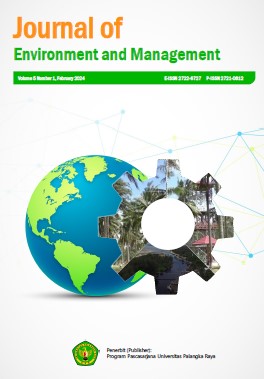Swear words in the Dayak Ngaju community
DOI:
https://doi.org/10.37304/jem.v5i1.13705Keywords:
Swear words, Dayak Ngaju community, linguistic, cultural referencesAbstract
Recognizing that language serves as a powerful reflection of culture intricately woven into societal norms and expressions, this research aims to analyze swear words used in the Dayak Ngaju community. The primary focus is on compiling a list of these words and investigating their linguistic and cultural references. Employing a qualitative approach and the descriptive method, data were collected through direct observations of individuals residing along the Kahayan River. Direct-question interviews were conducted, and recordings were made to document the data. Six villages were selected for direct observations, and nine residents along the Kahayan River, representing various occupations and age groups, were interviewed. The data analysis followed the three steps outlined by Miles and Huberman: data reduction, data display, and conclusion drawing or verification. The primary theoretical framework relies on Wardhaugh's categorization of swear words, complemented by Hughes's supporting theory. The findings reveal twenty-two commonly used swear words in the Dayak Ngaju community, categorized into mother-in-law (puki indum), animal (metu, asu, bakei, sabajai), sex (puki indum, latak, bawak, selak, kirang), death, religious matter, and oath (liau, kambe, setan, raung, saki raung, pandak umur, matei badaha, matei munu), bodily function (paleng param), and mental illness (paleng param, mameh, humung, bureng, paleng). Addressing the limitations of this research, including a diverse sample, longitudinal data, and comparative analyses with other communities, is crucial for robust and culturally contextualized research on swear words.






